Abandoned factories: I wish I could have them all! – This article is going to tell you a bit more about my passion for outdated, formerly functional architecture. Maybe you are an avid reader of 35mmc? Then you might already know my preferences when it comes to photography. So let’s dive in!
I live in northern Germany – in Hannover, a town where a fair amount of different industries had been established in the past. Many companies arose during the era of the industrialization in the second half of the 19th century. Interrupted by several crises and wars, the firms prospered in the following decades. Roughly hundred years later, structural transformations began and more and more of the old economy vanished. What I put here in an absolute minimum of words probably happened in most of the other “western” countries, too.
Closed for Good
Born in the 1980s, I already saw several larger factories and production facilities closing for good. Among others, there were a vehicle producer (Hanomag), a rubber factory (Continental), a brewery (Gilde) and the main goods station (Hauptgüterbahnhof). These sites often provided a potpourri of different architectural styles. As the companies evolved, older parts of their facilities were demolished and replaced by more modern technology. There is German saying, “Handel bringt Wandel” (literally: trade brings change). In a few cases, some of the buildings dated even back to the time of the company’s foundation. Following their closure, many of these former plants went into decline. After valuable machines and tools were removed, the buildings often stood there abandoned for years until they were finally broken up.
No Trespassing!
I have been fascinated by abandoned factories for a long time. Oftentimes, these places even scare me. Once busy and brightly illuminated, these places have become lost. Dark, destroyed and home to all kinds of strange creatures. I’m by no means an urban explorer; most of the time I deny myself to enter these sites. Though the interior can be extremely exciting, there remains a fair risk to hurt oneself. And there is also a risk of being fined: In almost every case, entering would mean trespassing.
With the fascination, a desire grew to document what I saw. So my little hunt for these dinosaurs began. In earlier years, I brought a small camera with me. As it wasn’t overly distracting to use, I would occasionally take the camera also inside. It allowed me to take home some casual snaps. Recently, my photographic approach shifted to a more formal and cumbersome one – meaning bulky equipment, tripod and fairly long exposure times. Under these circumstances, I strongly prefer to stay outside the buildings.
I am going to show you some places I portrayed from in front of the fence. If you want to take a look inside abandoned factories, I can highly recommend the Proper People’s YouTube channel. For example, these two guys explored a large steel mill, an Art Deco-style power plant or a mining facility.
#1, the Former Mill
The first abandoned factory I offer you is a former feed mill. Originally built as a brewery, a producer of concentrated feed used this facility in later years. Production ended in 1985, after the company had gone bankrupt.
The mill is located in the small town of Verden, right beside the train line between Hannover and Bremen. Good for me: the train station is only a few walking minutes away. As it turned out, my girlfriend’s mother worked there in the early 1980s. So when I expressed my wish to take some shots of the mill, we decided to make a family trip out of it. Mind that: exploring industrial ruins – together with your “parents-in-law”!
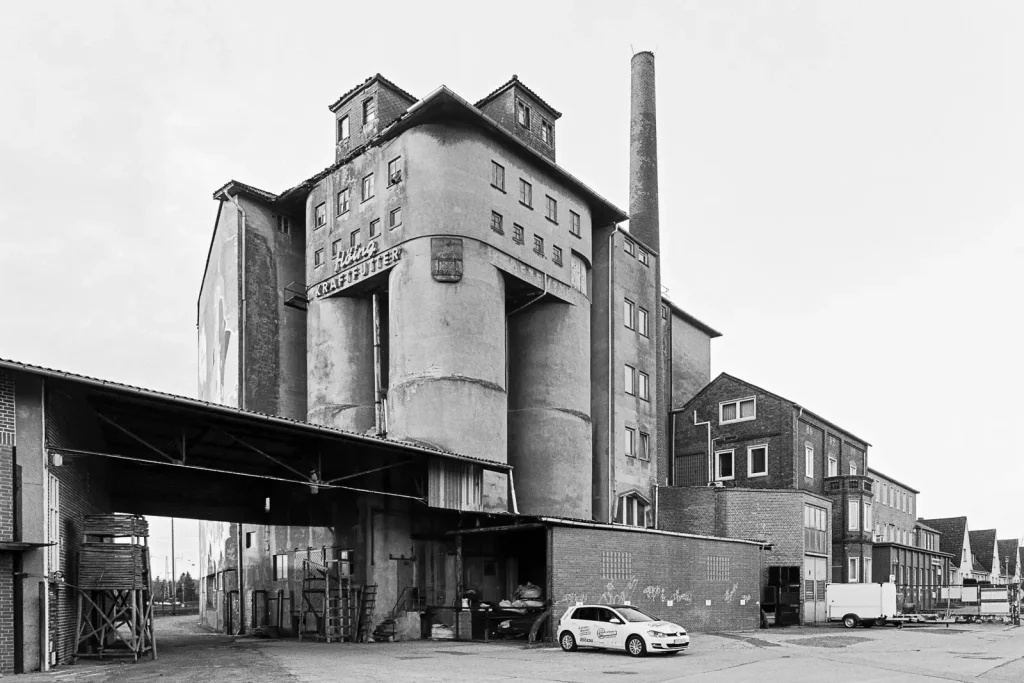
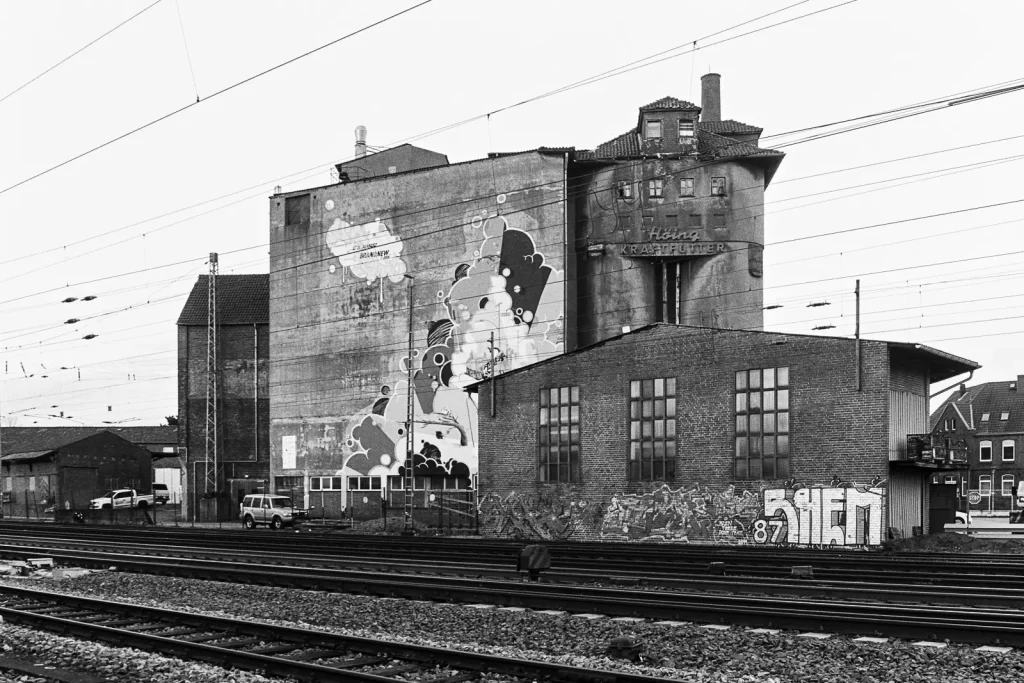
Fortunately, we could access the site without climbing over a fence or ignoring a “Keep off!” sign. And as it was a Sunday evening, no other people came along. That’s how someone can enjoy his work!
Oriented to the forecourt and the road, the complex appears detailed and exhibits a variety of building structures. I liked these views, my favorite photographs came from this side. In contrast, the front facing the railroad tracks appears rather mighty and monolithic.
After our trip, I researched the internet and found a blog dedicated to mills in Germany. One entry tells the story of this site. Interestingly, the article provides (almost) the same photograph I used as featured image for this post. The slight difference: the other blog’s photograph was taken in 1965, whereas my version is from 2017. Check it out and compare for yourself!
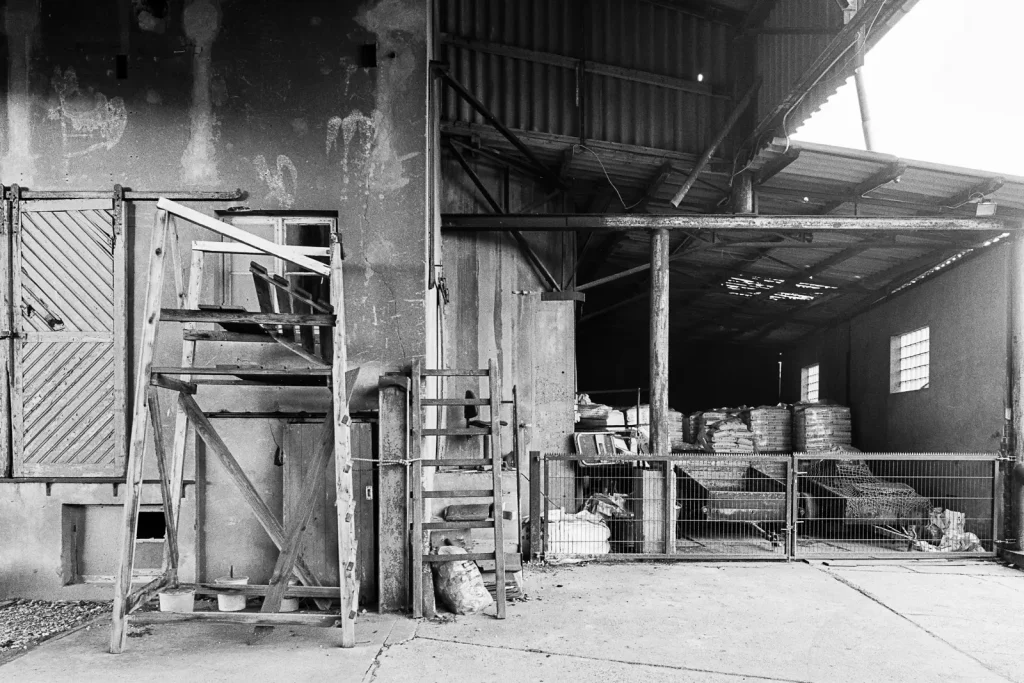
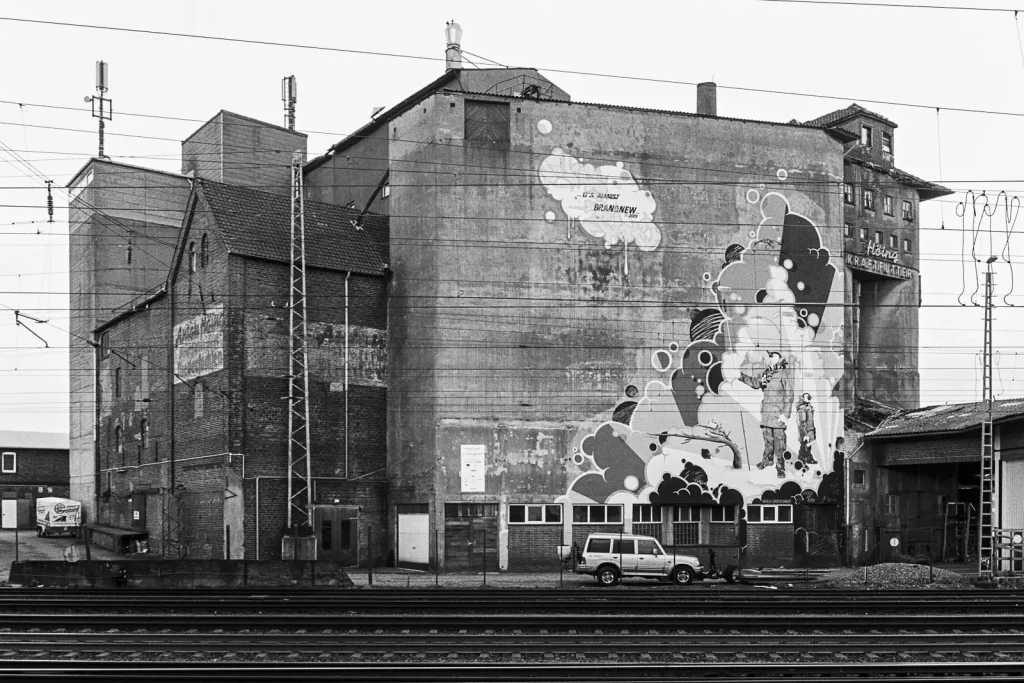
#2, the Grain Elevator
A grain elevator is a facility meant to store agrarian goods, not to produce them. To sell you this one as an abandoned factory might not be totally correct. I beg your pardon.
I (re-)discovered this grain elevator on Christmas, when we took the high-speed train to visit friends in Frankfurt. Shortly after the train had left Hannover, I caught a short glimpse of it. Silo tubes shining in the morning sun. Less than one week later, on New Year’s Day, I made my way to it. As I arrived there in the afternoon, the sun had traveled around. Now it was illuminating the elevator’s other side that faces away from the rail tracks. Lucky me, as I could take photographs from a harvested corn field just in front of the facility.
It’s always good to prepare and to know your location beforehand. Checking the sun’s path with a dedicated app and learning about the surroundings with Google Maps have never proven wrong.
Before I rode back home, I took a last image of the silos’ bottom. It turned out to be a tricky shot because I had to maneuver myself in the narrow space between a railing and the site fence. This meant less than one meter to place the tripod. To eventually get my shot, I stuck the lens through the wire grid of the fence.
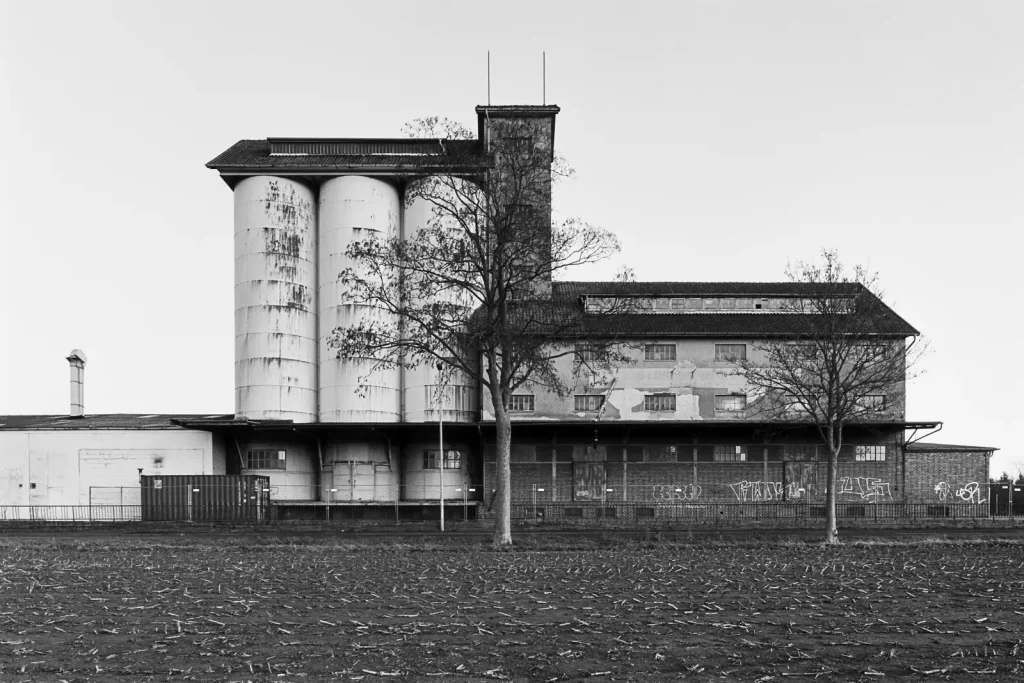
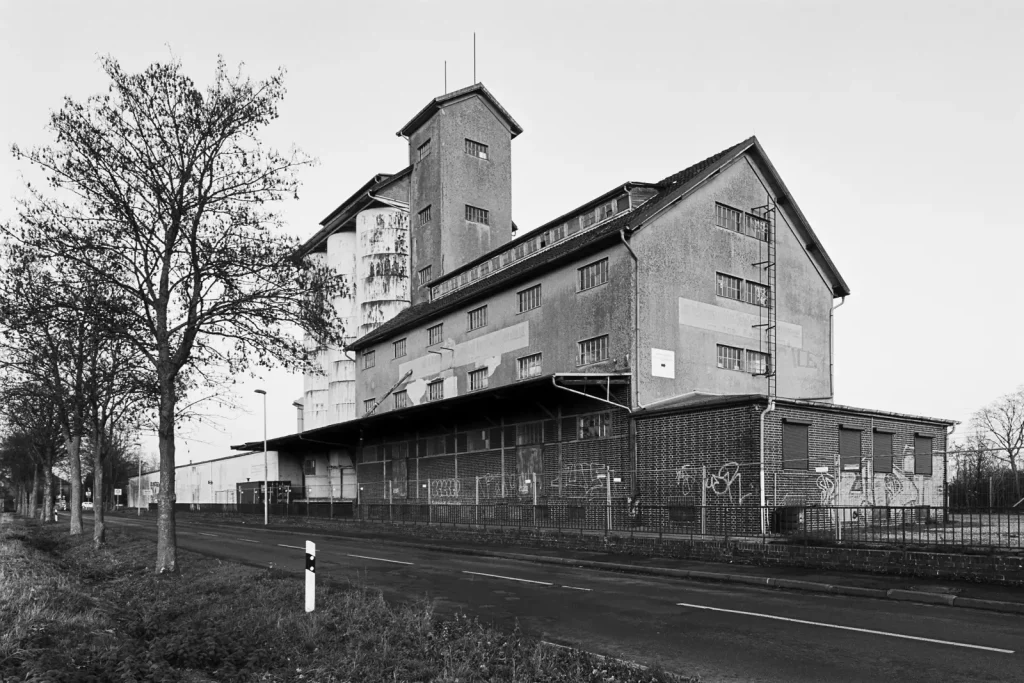
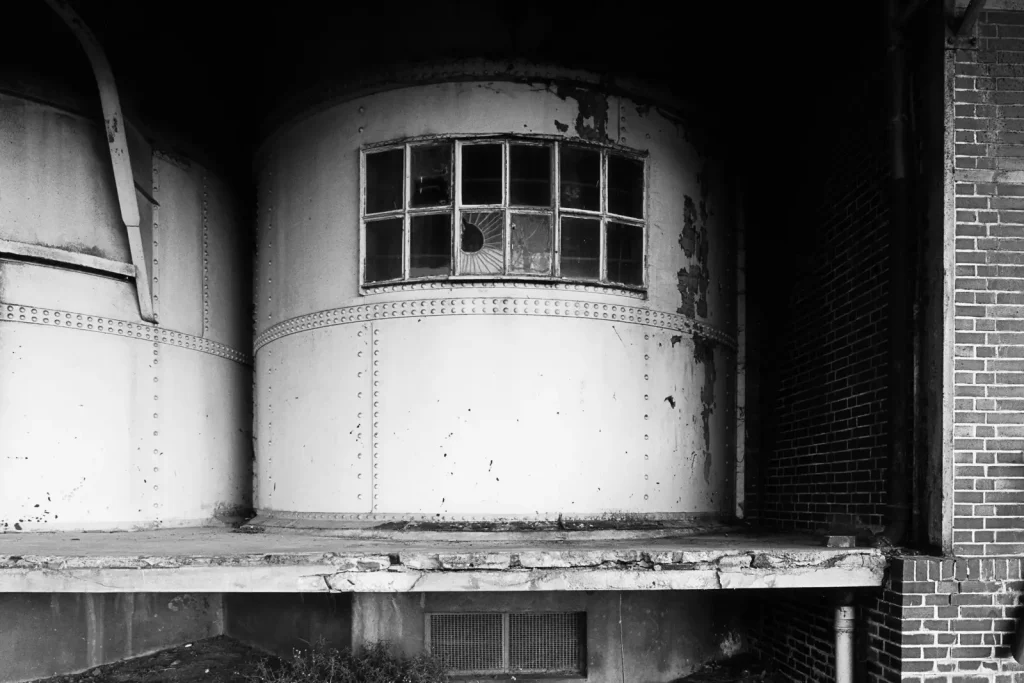
#3, the Abandoned Sugar Factory
Due a flat landscape surrounding it, three tall silos allow you to recognize this former sugar factory from kilometers away. A true landmark.
As my grandparents had previously lived in the same village, we went there from time to time during my childhood. I remember that I always felt a little bit disturbed, when we approached the place. Such a massive concrete castle standing at the outer rim of a sleepy nest. The factory closed in 1986, two years after I was born. So I never witnessed it being active. More than 30 years of deep sleep followed – until demolition began in late 2018. According to local newspapers, toxic substances have delayed the process recently. Workers discovered asbestos in some walls as well as oil and lubricants in the tanks.
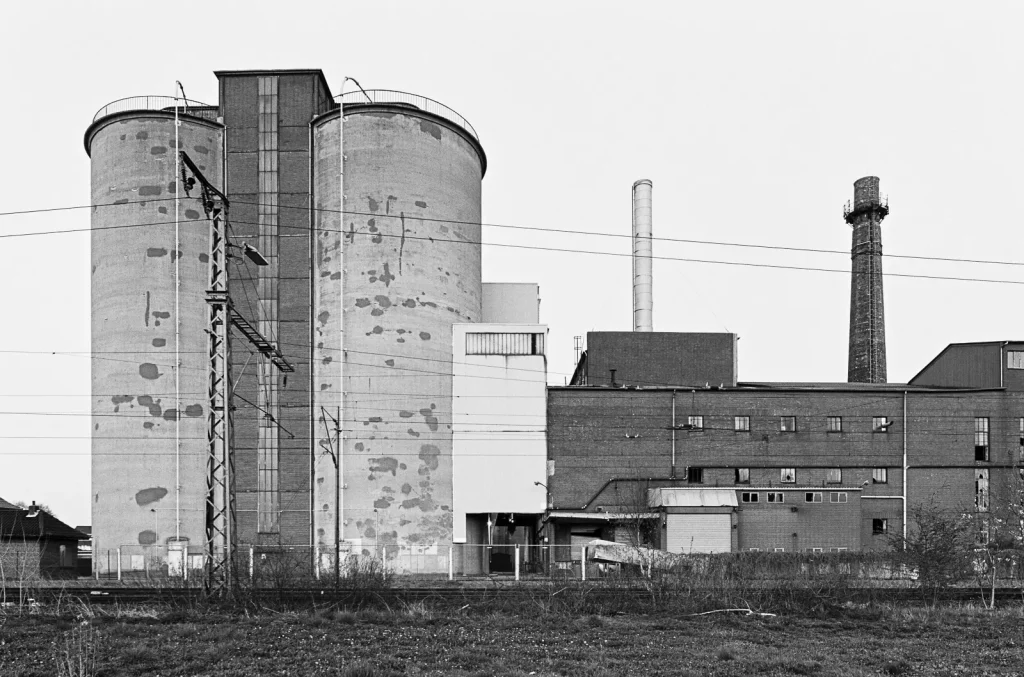
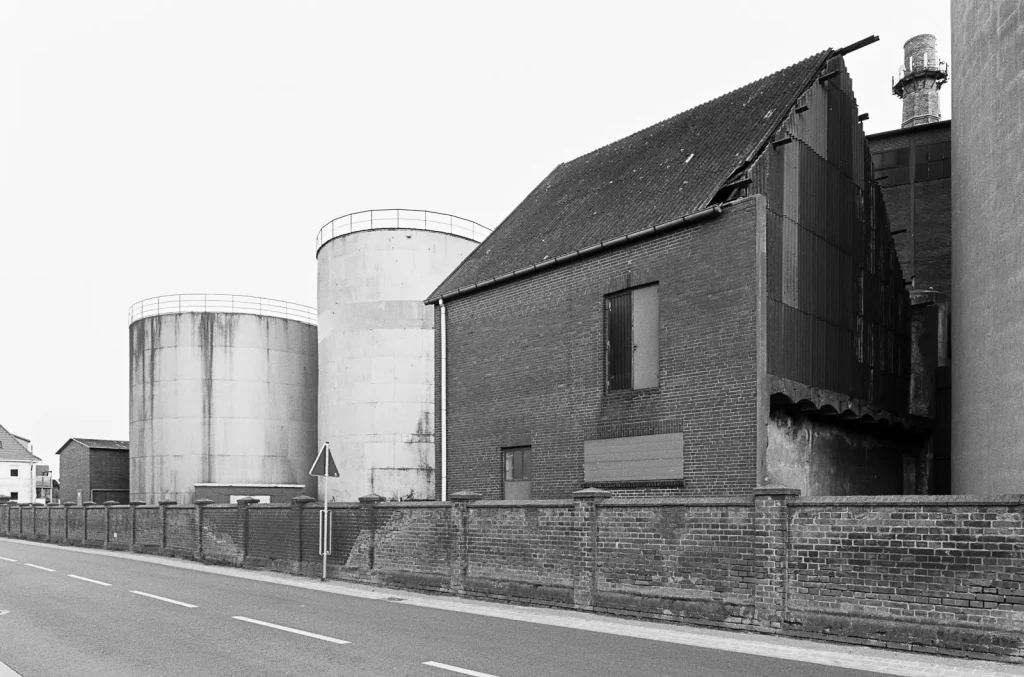
In April 2018, I paid the site my first and last visit with a camera. I started with circling the abandoned factory and scouting for good spots. While doing so, I realized that the factory had a great impact from afar – but it was difficult to grab from up close. As hard as I tried, the tall silos and the extended brick buildings wouldn’t fit into a single frame. So I ended up with images showing individual portions of the site. Pars pro toto.
A technical note: as I used a rather short focal length, perspective distortions occur. Seen from the side, the circular shapes of the silos and tanks appear oval. I’m not a big fan of these effects, they can sometimes look really strange. However, if I’m not able to avoid them, I will consider the distortions as a necessary evil.
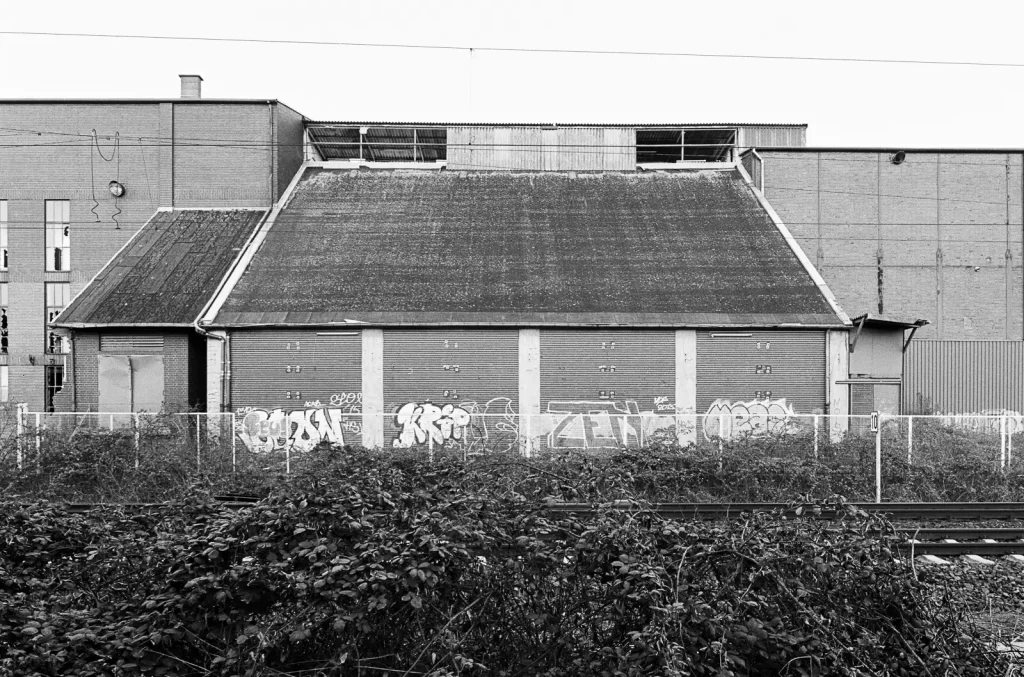
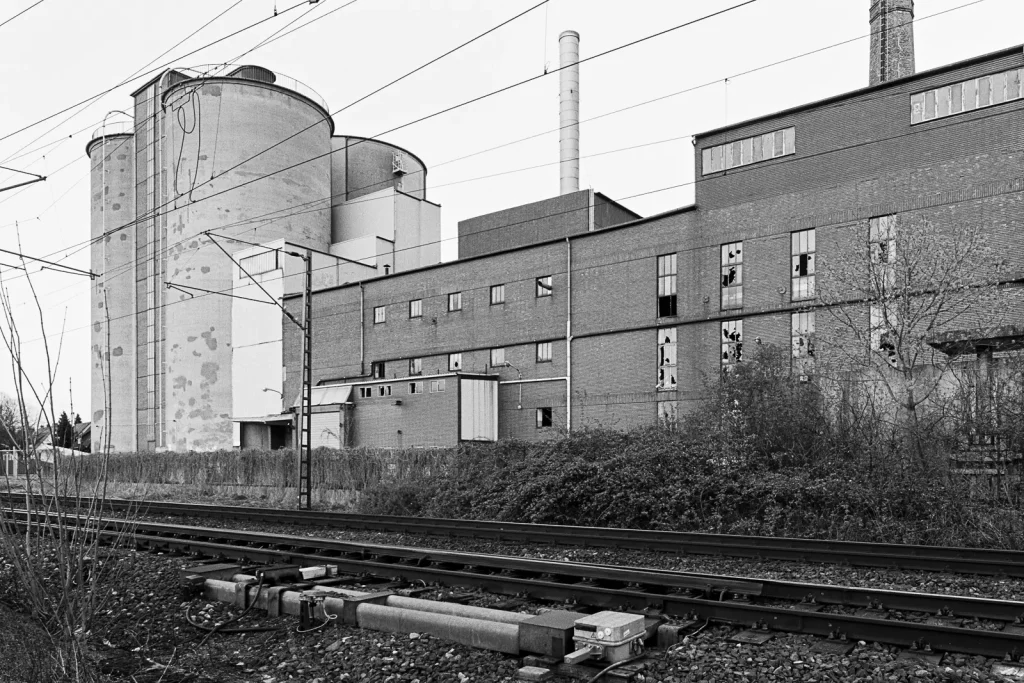
#4, Active Cement Works (and Adjacent Industry)
Eastern to my home, rich deposits of lime lead to a flourishing cement industry. I already reported on this area here on 35mmc, as it is my preferred environment to test new photographic equipment. The main attraction are two cement works, one active and one disused. Besides the cement industry, there are some more plants to discover. All entries from #4 to #6 lie in walking distance with respect to each other.
Let’s start with the active cement works! Although it’s not an abandoned factory (yet), I nevertheless include it to my little series. Some of the facilities already exhibit that appeal of the run-down.
As one would expect, fences and walls surround the property. Along its southern flank, trees and bushes effectively shield the site from curious photographers. However, the northern flank borders on a railway line, which I could access from the railway’s opposite side. These circumstances restricted the number of suitable photo spots. Fortunately for me, I found some interesting ancillary facilities like a conveyor system. And there is a historic brick building right at the site’s entrance, which I really like. I found several versions of the same photograph in my archives. (Digital, on color film, on black-and-white film – the oldest one I had taken seven years ago.)
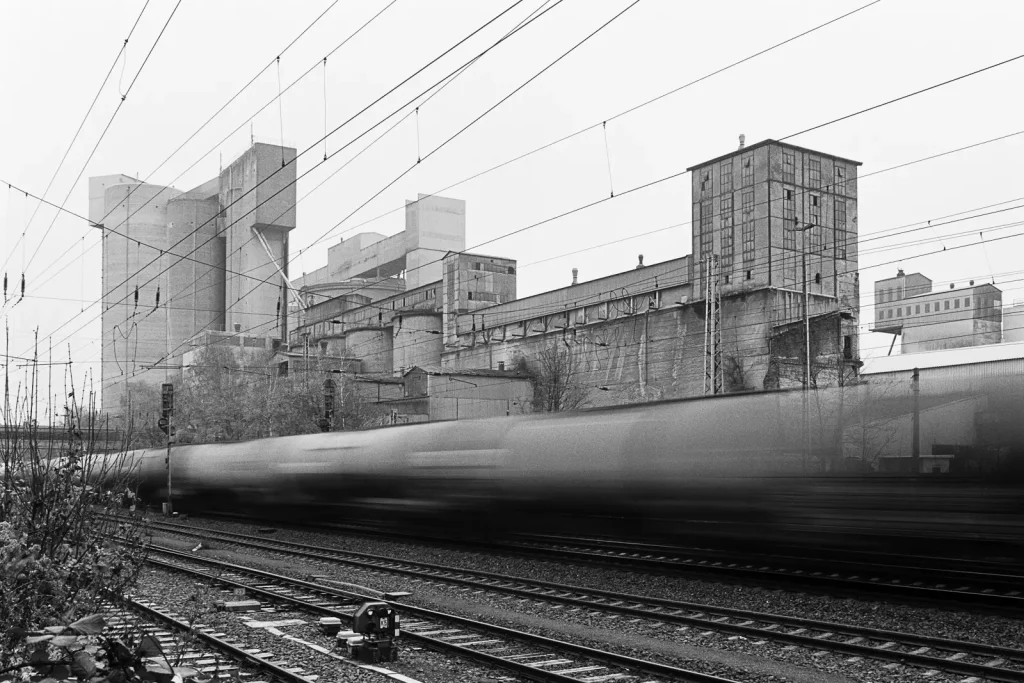
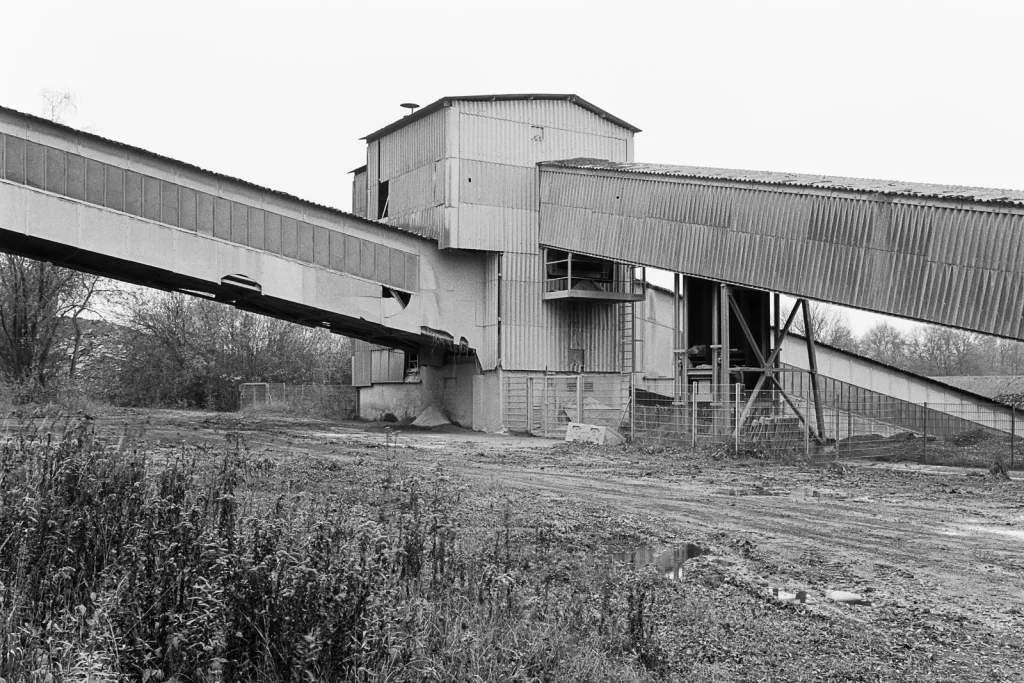
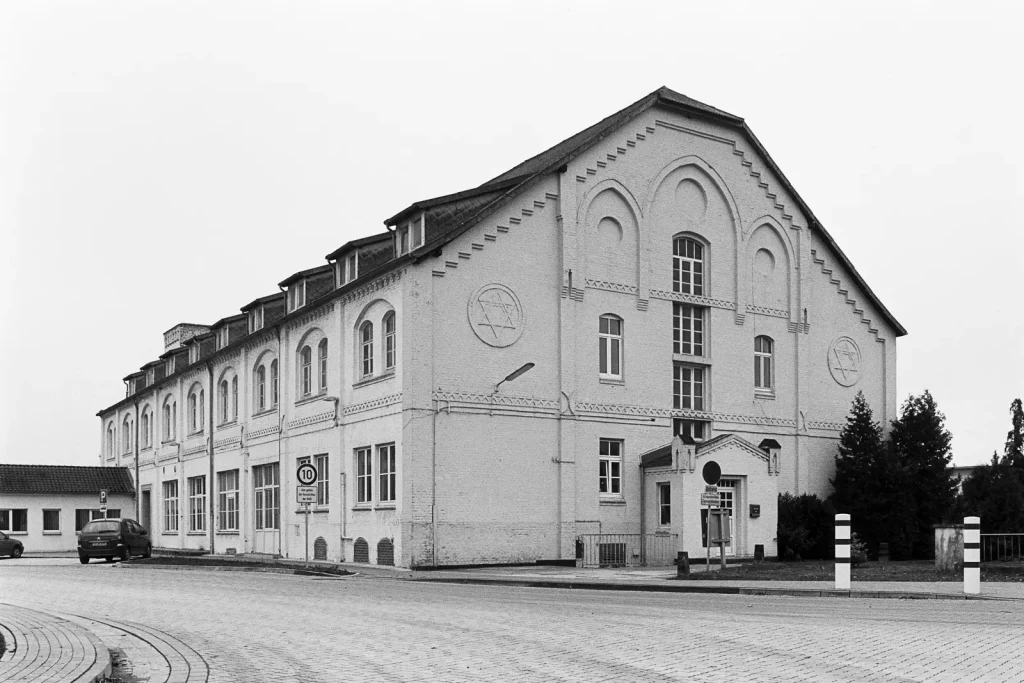
Just a stone’s throw from there, a producer of ethanol operates its facility. I always liked the group of slim tanks, which stands at the rear side. Unfortunately, a rather high wall regularly deterred me from taking a photo. Until one trip, when I finally had a “Nothing can stop me!” moment. So I placed my camera on the wall’s top edge and took the photo blindly. Went well.
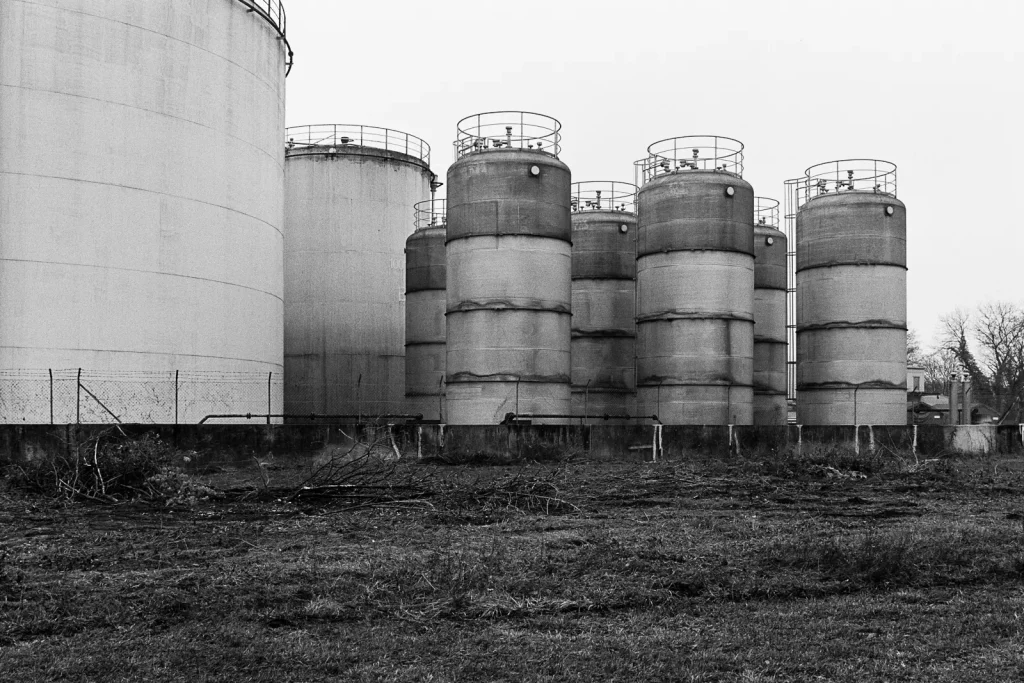
#5, Abandoned Cement Factory
More interesting from a photographer’s perspective is probably a nearby cement works that ceased production in 1986. A small road runs along the site and allows for some nice views. Around 2015, they demolished several buildings and parts of the characteristic silos. “Oh, no. Another abandoned factory less!”, I thought. But the demolition process stopped soon after – right in between. What were the owner’s intentions? Obviously not to clear the site for a new usage. Maybe some buildings were just in danger of collapsing? I don’t know.
There are still some more ideas buzzing around my head. After they had recently removed parts of the facade, you can enjoy an unobstructed view of the kiln. I should remember that for the time after the lock down!
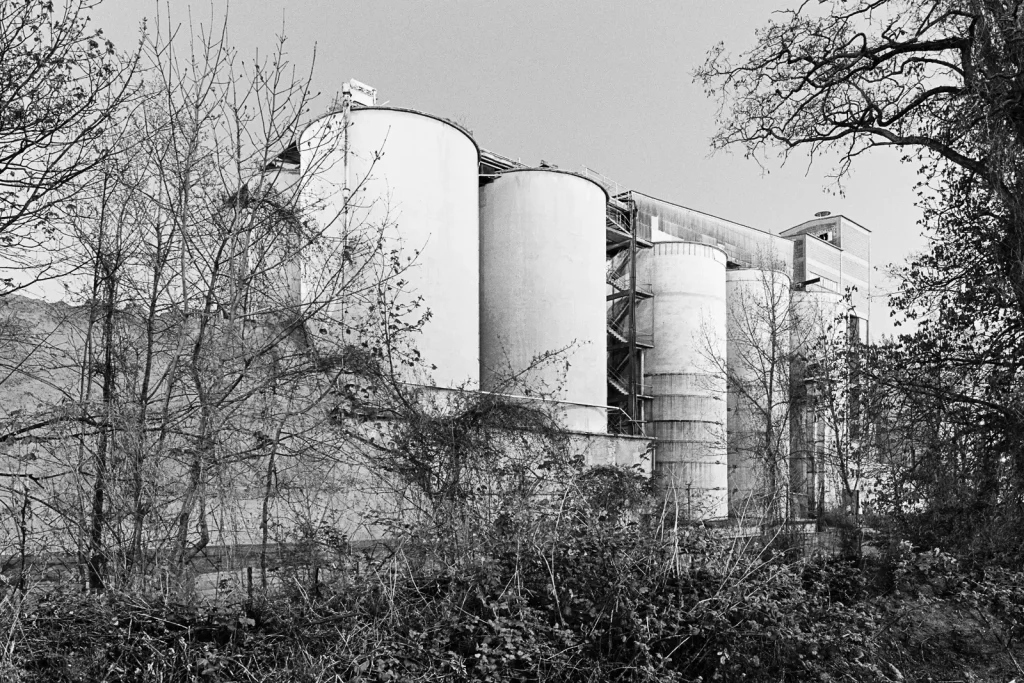
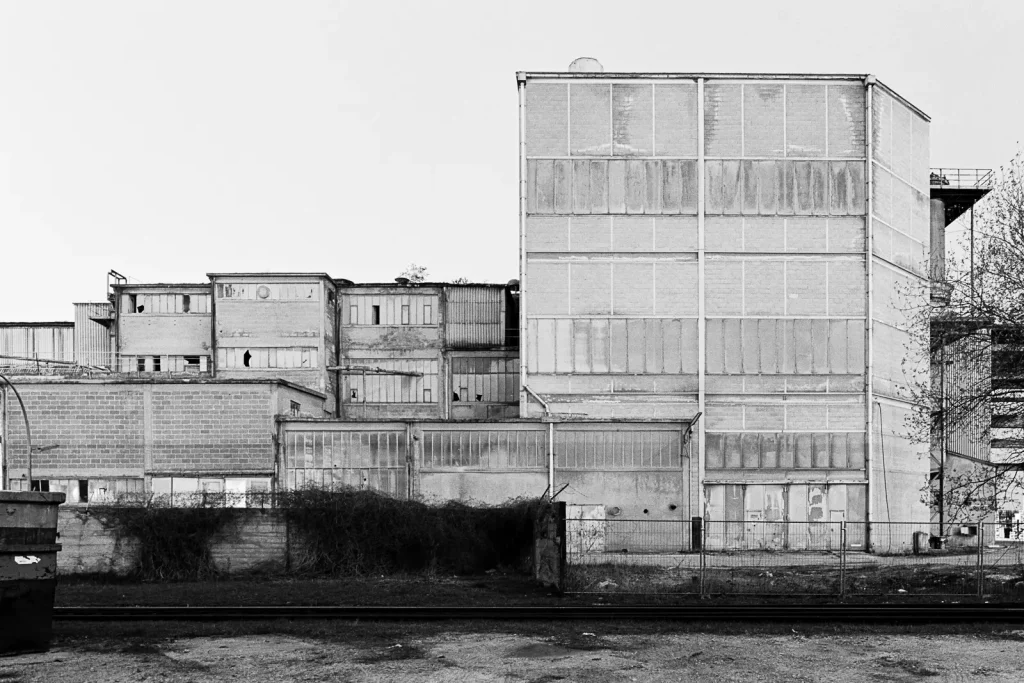
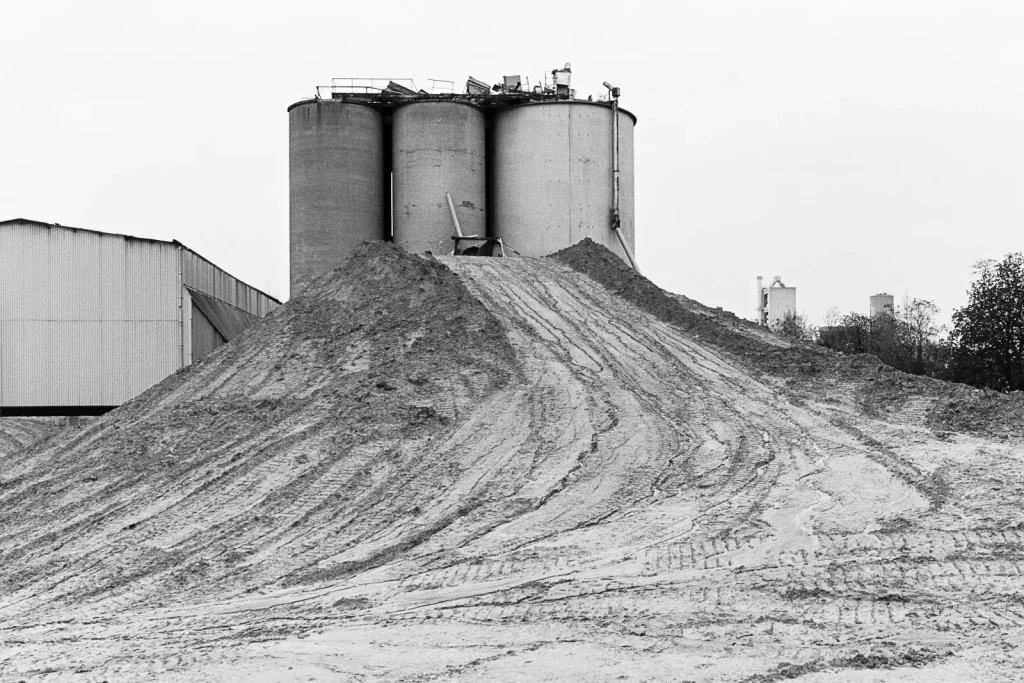
#6, Carbon Black Plant
The last of my abandoned factories is a plant for carbon black. I had read in the newspaper that the owners planned to close this location. As I went there, they had already ceased the production. But I could still spot some workers on site – and the lights were still on. So I walked down the road and took a handful of photographs. Nothing overly exciting, though. Silos, tubes, metal frameworks, buildings covered with corrugated iron. On the occasion of my next visit, some months later, the factory was gone. Completely! My eyes wandered around an empty field. Here, demolition happened crazily fast.
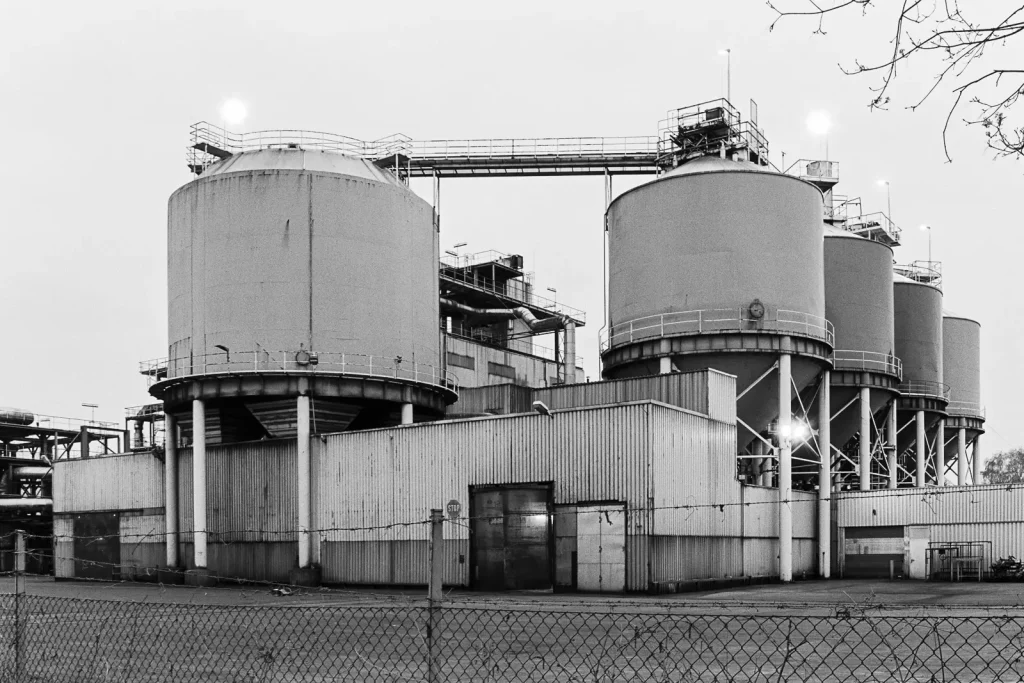
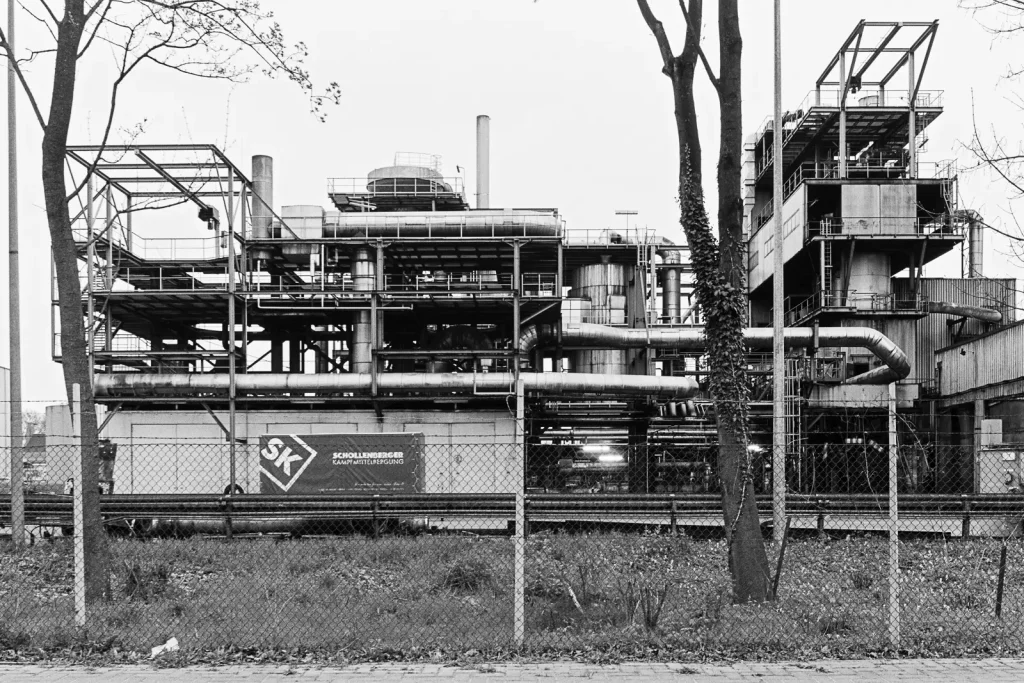
Final Remarks
I shot all images on 35mm film – mostly Fuji Acros (I), in some cases Kodak Tmax 100 and Ilford FP4 plus. Camera-wise, I relied on my trusty Canon EOS 1n paired with two shift lenses (17 and 24mm) as well as on my Leicaflex SL and a 35mm shift lens. Since the latter setup is a rather new addition to my fleet, I only used it for the recent photographs.
Well, I hope that I could convey my passion for these dinosaurs. Abandoned factories will remain one of my most favorite subjects in photography. They are witnesses of bygone eras, run-down and useless. Unfortunately, in most cases they eventually disappear without a trace.
+++ Bonus Material +++
On my trip to the grain elevator (#2), I had two cameras with me: the Canon loaded with Tmax – as well as the Leicaflex, but this one bearing Kodak Portra 400 inside. As color images don’t fit in the scope of this series, I didn’t want to show them in the first place. However, I rethought this decision and came to the conclusion that they would provide a nice supplement. In addition, I couldn’t figure out how to present them to you on another occasion.
The evening of this clear and cold winter day endowed me with beautiful pastel colors. And then there were these browns of the rusty silos. For me, the colored representation of this subject transports definitely more emotions than its black-and-white counterpart. The color images evoke a strong sense for the condition of the grain elevator, for the time of the year and for the time of the day. Especially the subtly changing tones during the early dawn could I only record this way.
So, black-and-white or color, which one is to prefer? This question leads to an ancient and everlasting discussion. Never to be solved – and this is a good thing!
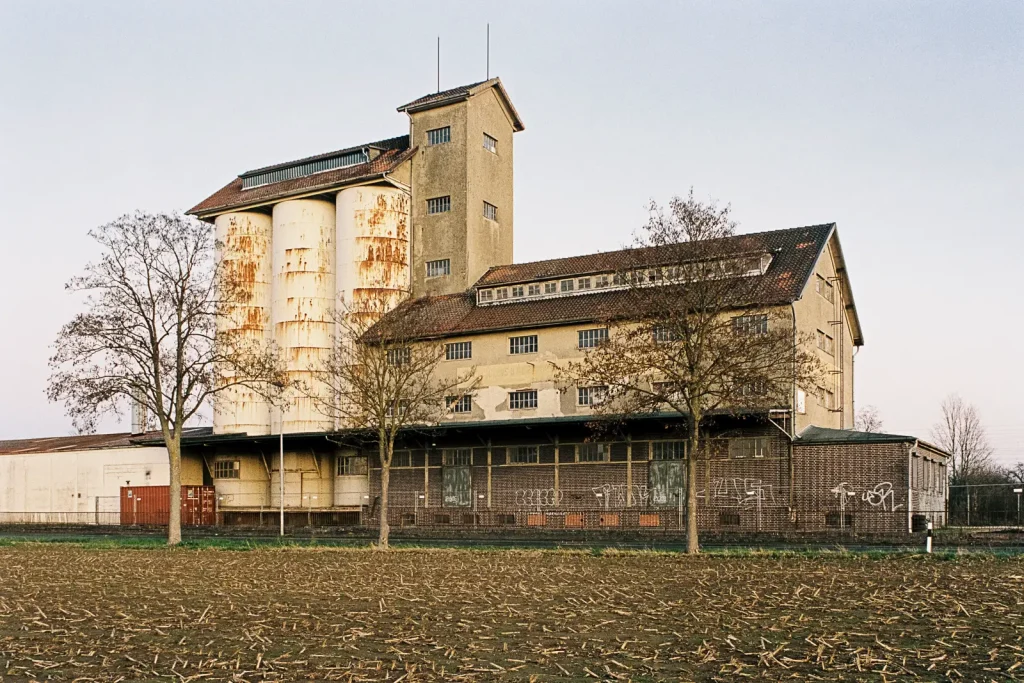
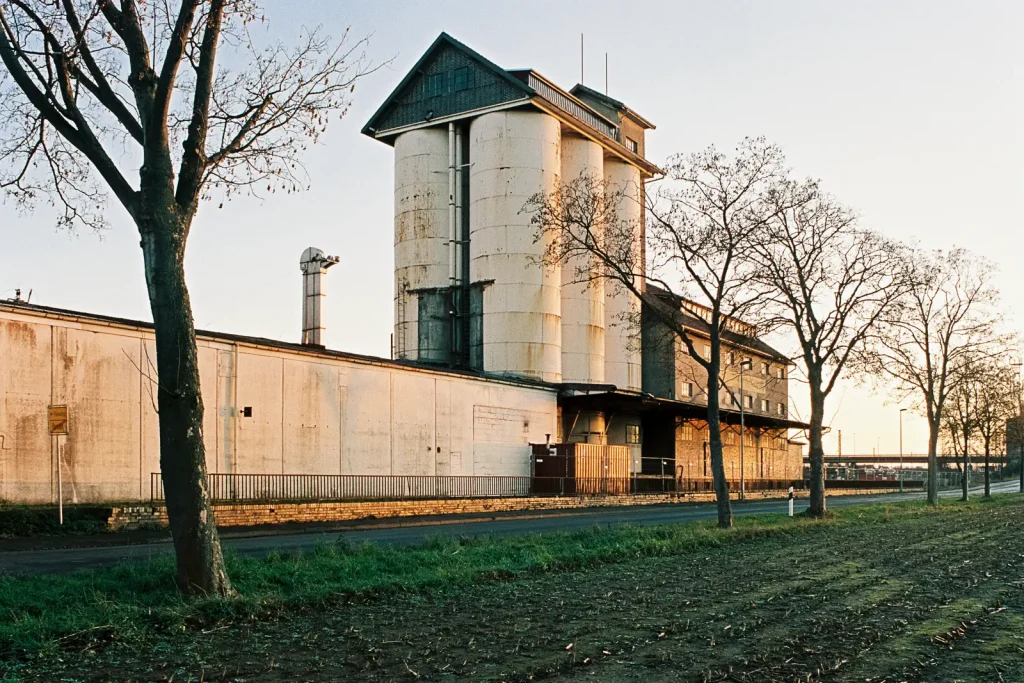
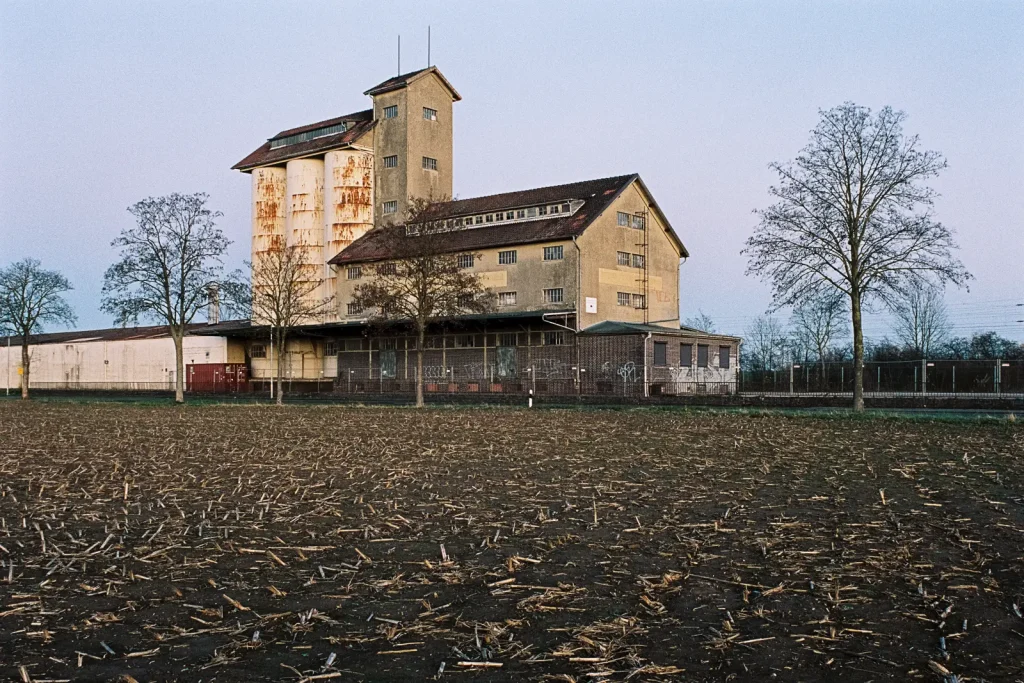
You’ve got all that far? Thank you for reading!
Share this post:
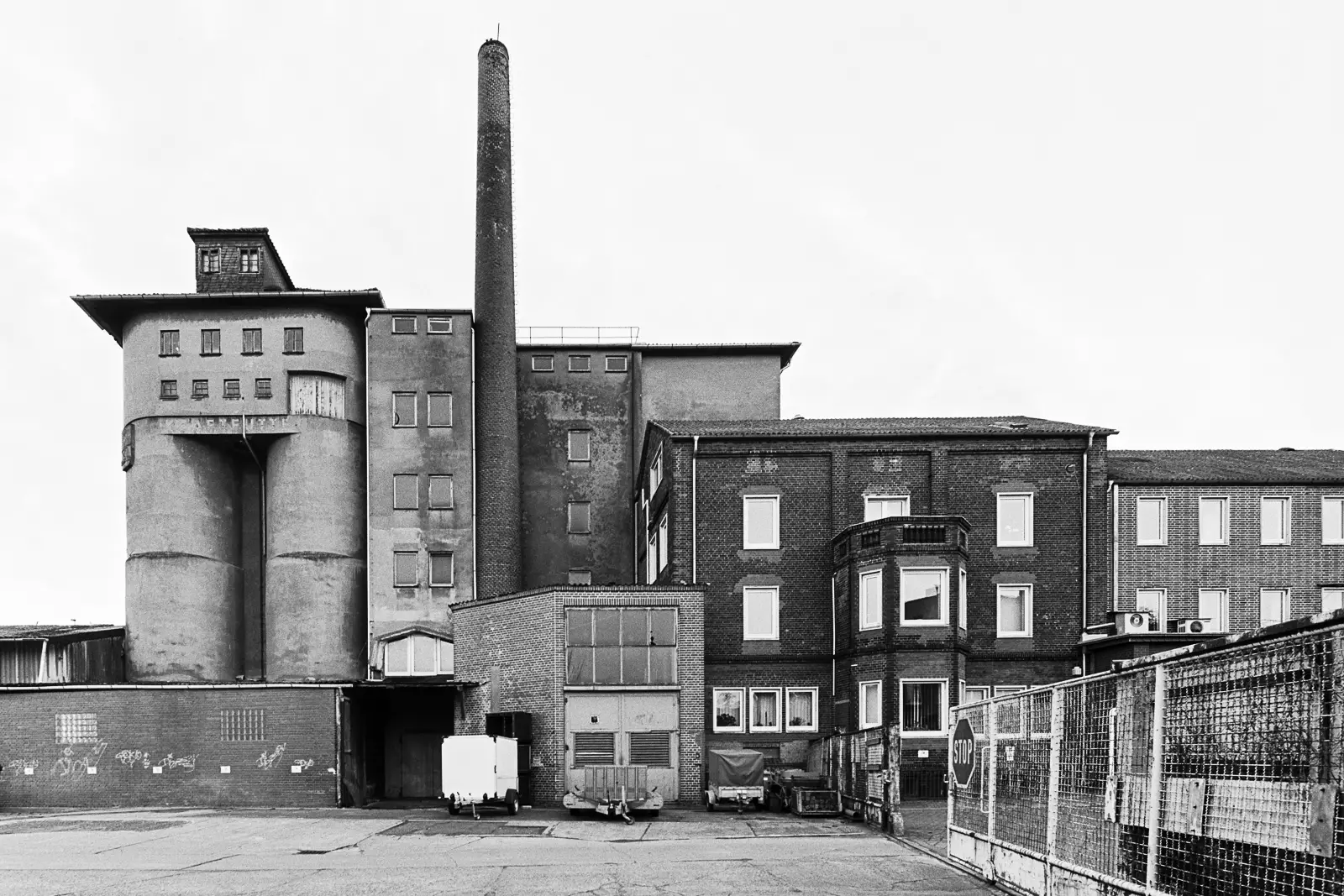








Comments
Michael Krilić on Hunting Dinosaurs or: Photographing Abandoned Factories – by Christian Schroeder
Comment posted: 16/06/2020
Ich habe mich oft über die Geschichte dieser alten Relikte gewundert, als ich bis Ende letzten Jahres auf der DB zwischen Südwest- und Nordost Deutschland pendelte.
Comment posted: 16/06/2020
Stuart L Marcus on Hunting Dinosaurs or: Photographing Abandoned Factories – by Christian Schroeder
Comment posted: 16/06/2020
Comment posted: 16/06/2020
David Allen on Hunting Dinosaurs or: Photographing Abandoned Factories – by Christian Schroeder
Comment posted: 16/06/2020
I like the B W and the color!
Maybe you should try some Lomo stock to get a deliberate change of 'feel'?
'Metropolis' possibly?
Comment posted: 16/06/2020
Trev on Hunting Dinosaurs or: Photographing Abandoned Factories – by Christian Schroeder
Comment posted: 16/06/2020
I'd be interested to know the significance of the Star of David on the facade of #4.
Comment posted: 16/06/2020
Andrew Karlson on Hunting Dinosaurs or: Photographing Abandoned Factories – by Christian Schroeder
Comment posted: 16/06/2020
Comment posted: 16/06/2020
Matthew Green on Hunting Dinosaurs or: Photographing Abandoned Factories – by Christian Schroeder
Comment posted: 16/06/2020
Comment posted: 16/06/2020
Kate on Hunting Dinosaurs or: Photographing Abandoned Factories – by Christian Schroeder
Comment posted: 16/06/2020
Comment posted: 16/06/2020
Jim Hanex on Hunting Dinosaurs or: Photographing Abandoned Factories – by Christian Schroeder
Comment posted: 17/06/2020
Comment posted: 17/06/2020
Khürt Louis Williams on Hunting Dinosaurs or: Photographing Abandoned Factories – by Christian Schroeder
Comment posted: 17/06/2020
Comment posted: 17/06/2020
Comment posted: 17/06/2020
Comment posted: 17/06/2020
Jive on Hunting Dinosaurs or: Photographing Abandoned Factories – by Christian Schroeder
Comment posted: 17/06/2020
Comment posted: 17/06/2020
Russell Young F.R.P.S. on Hunting Dinosaurs or: Photographing Abandoned Factories – by Christian Schroeder
Comment posted: 17/06/2020
Comment posted: 17/06/2020
Kodachromeguy on Hunting Dinosaurs or: Photographing Abandoned Factories – by Christian Schroeder
Comment posted: 18/06/2020
Comment posted: 18/06/2020
Peggy on Hunting Dinosaurs or: Photographing Abandoned Factories – by Christian Schroeder
Comment posted: 19/06/2020
Daniel Castelli on Hunting Dinosaurs or: Photographing Abandoned Factories – by Christian Schroeder
Comment posted: 13/07/2020
I'm a big fan of the work your produce.
When I began exploring photography in 1970, I often visited an abandoned farm with rusting machines rotting away in fields. I had a blast making the pics, until the old farmer called the police on me, accusing me of vandalism. Not true.
Now, it's almost impossible to gain access to these sites here in the US. Too bad, I'm in the mood to revisit these places.
Comment posted: 13/07/2020